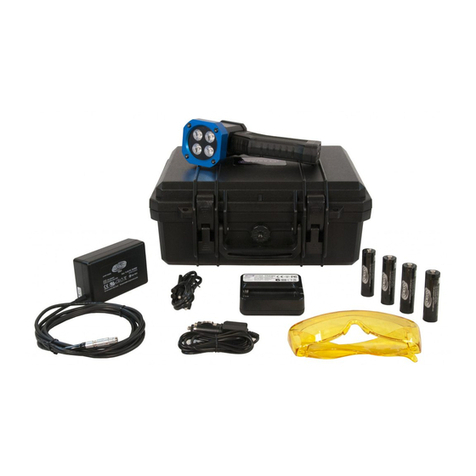10
4. TECHNICAL INFORMATION
4.1 Batteries
e active measuring time of the Hand Unit is estimated to about 100 h. If the
display does not light up aer pressing “Power On”, new batteries (3 x AA 1,5V) are
needed. e batteries used for the Hand Unit can be replaced by the user.
e active measuring time for the Sensor Unit is estimated to approximately 600h.
If the battery is discharged and/or if the Sensor Unit is cold (below -30°C/-22°F)
the LED will ash 5 times and the Sensor Unit will turn o. e battery shall only
be replaced by Labino or a Labino authorized calibration center (see section 5).
Batteries are changed by the factory when the spectrometer is recalibrated.
4.2 Operating conditions
a) Operating temperature: 0˚C to +40˚C
b) Storage temperature: -30˚C to +60˚C
c) Relative humidity: 5% to 95%, noncondensing
4.3 Relative spectral response
e wavelength dependence of the relative spectral responsivities of the Apollo 1.0
and 2.0 UV-radiometers are shown in Figure 7. e relative spectral response of
Apollo2.0 fullls the requirements of ISO 3059 which are:
a) the relative spectral response shall not exceed 105% for any wavelength;
b) the peak relative spectral response shall occur between 355 nm and 375 nm;
c) the relative spectral response at a wavelength of 313 nm shall be less
than 10%;
d) the relative spectral response at a wavelength of 405 nm shall be less than 2%.
5. CALIBRATION
e recommended calibration interval is six months and is done by Labino or a
Labino authorized calibration center. ese centers can be found online at
www.labino.com.
Labino AB
Fågelsångsvägen 16
186 42 Vallentuna
Sweden
Tel.: +46 (0)883 90 70
labino@labino.com




























